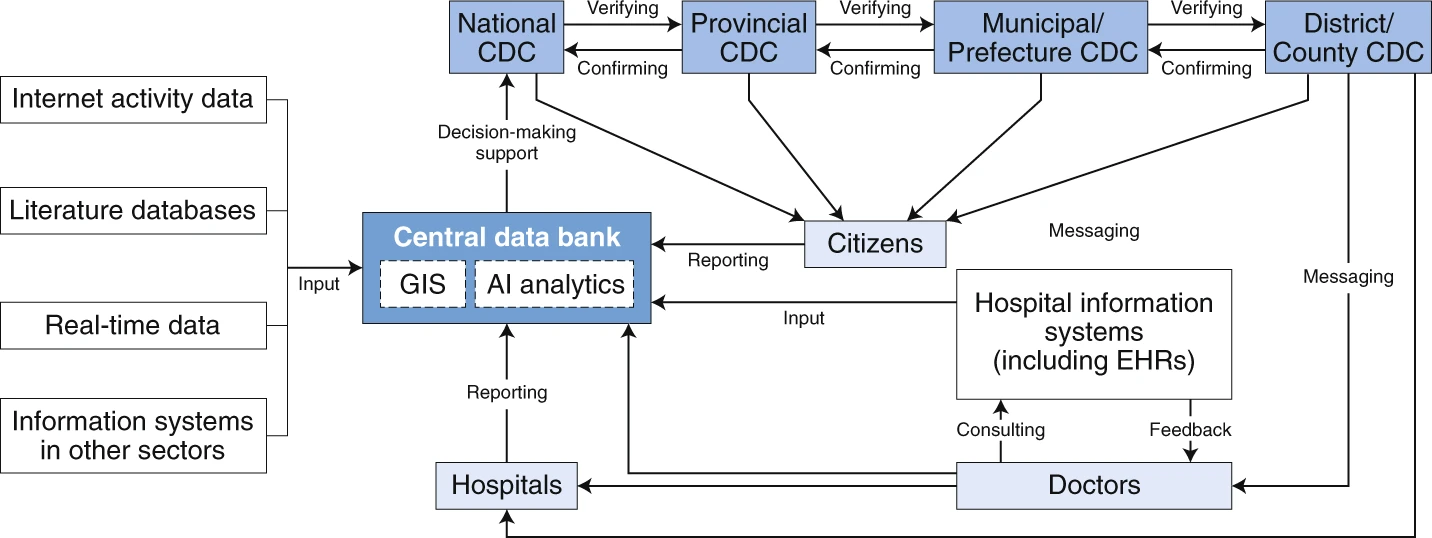Implication
Spatial life course epidemiology—the study of evolving agents, mobile hosts and changing environments as a dynamic epidemiological triad—could upgrade the current NNDRS into a national intelligent syndromic surveillance system (NISSS), with which early risk could be identified on the basis of information about patients’ symptoms (e.g., cough, fever, diarrhea, vomiting and shortness of breath) during the early phases of illness, sometimes with the assistance of surrogate data that indicate early illness (e.g., school or work absenteeism data, or veterinary data such as unexpected avian deaths). Going beyond traditional epidemiology, spatial life course epidemiology utilizes an array of advanced technologies, including artificial intelligence, to support both data analysis and decision making and to automate the analysis of risk factors, transmission patterns and potential measures that could be used to control the spread of the disease, which could dramatically improve the public health response.
Links
Picture


